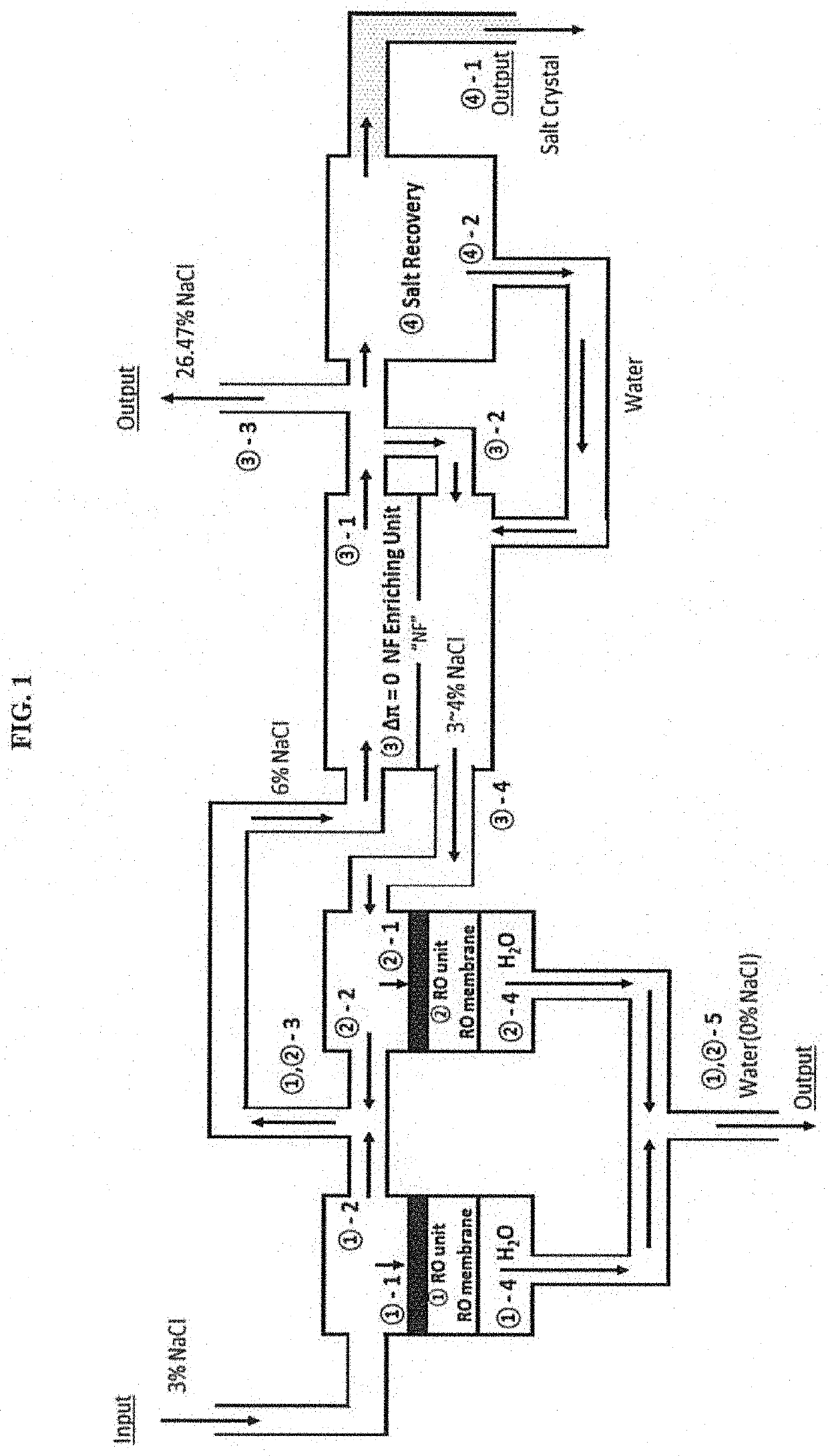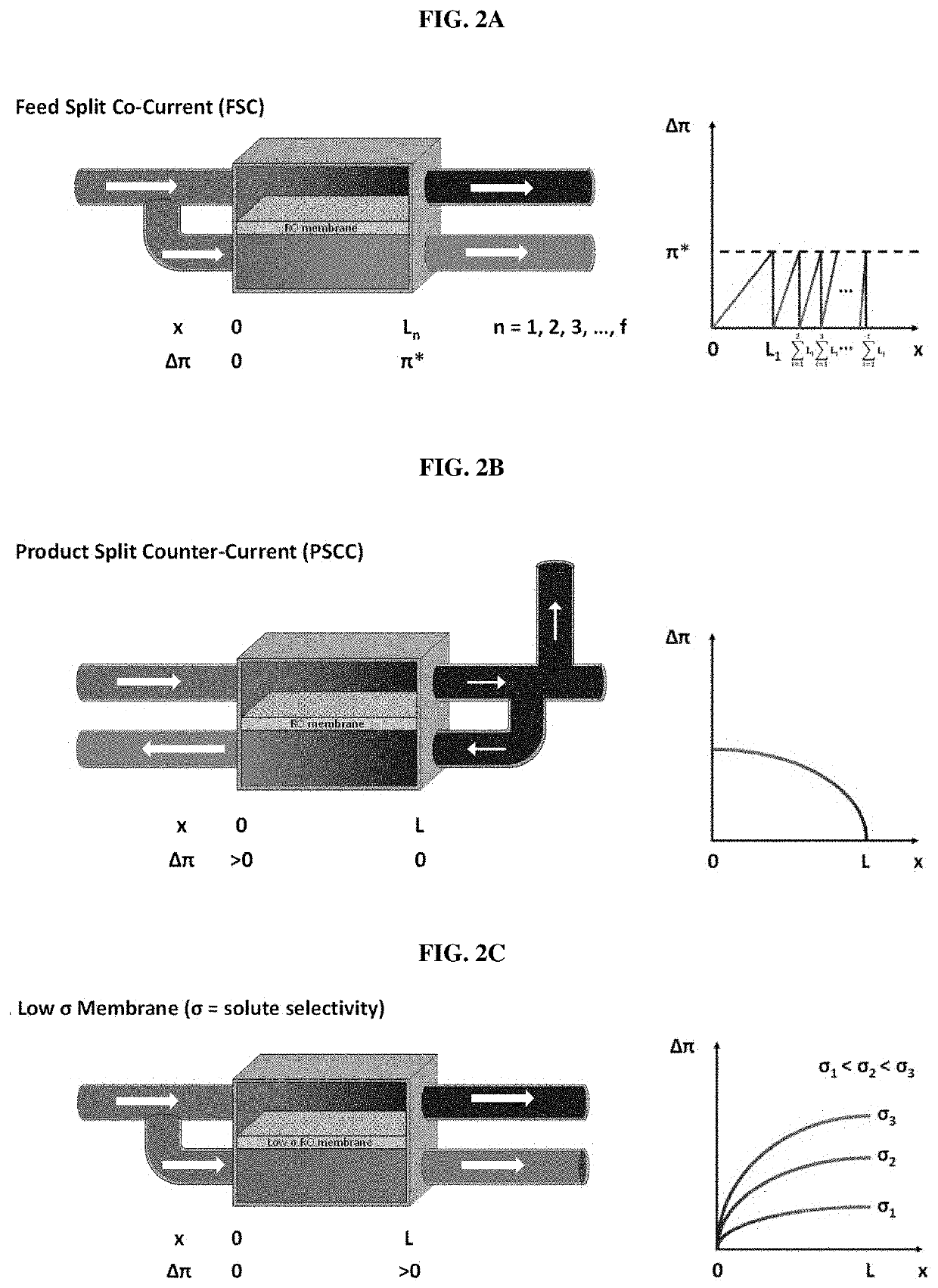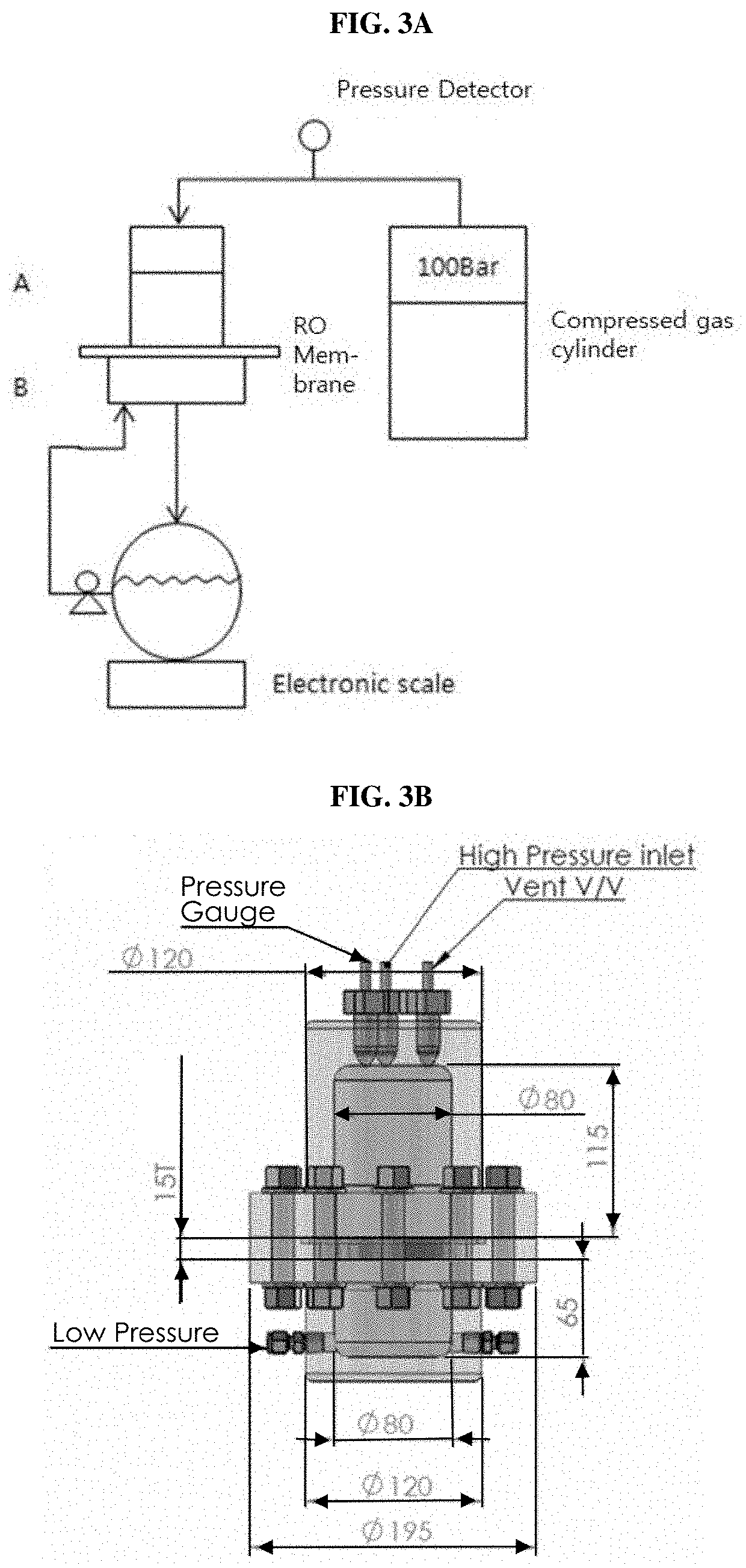Method of osmotic pressure free reverse osmosis for enriching solute-containing solution to high concentration
a reverse osmosis and solute-containing solution technology, applied in reverse osmosis, water treatment pressure conditions, membranes, etc., can solve the problems of difficult recovery of solutes, difficulty in overcoming osmotic pressure differences, and only 50% solvent recovery rate, so as to maximize concentration and minimize energy consumption and operating costs
- Summary
- Abstract
- Description
- Claims
- Application Information
AI Technical Summary
Benefits of technology
Problems solved by technology
Method used
Image
Examples
example 1
r Recovery of Water and Solute
[0083]1-1: Method for Recovery of Water
[0084]When pressure is applied to 3% salt water, the flux of the water can be easily calculated as Jw=Lp (ΔP−Δπ). As shown in Tables 1 and 4, the osmotic pressure of 3% salt water is 23.743 bar, and in this case, the minimum energy is 0.659 kwh / m3. When 500 kg of water is recovered by RO, 30 kg solute (solute rejection is assumed to be 100%) and 470 kg water remain, and the solute concentration is 6%. The osmotic pressure at the 6% solute concentration is 50.467 bar, and the energy required for reverse osmosis is (23.743+50.467) / 2*0.5 / 36=0.515 kwh as calculated using the arithmetic mean of the osmotic pressures at 3% and 6% solute concentrations.
[0085]1-2. Method of Recovering Water from Recycle Stream
[0086]For a recycle stream, recycle energy is recycled and energy is also required for RO for water recovery. Energy related to the recycle stream varies depending on the method, and when 470 L of water is 100% recove...
example 3
ration of Solute / Solvent Based on Feed Input-Split Cascade Process
[0105]As shown in FIG. 4, the process of the present invention can produce water from a 3% salt input stream, a lower water production system, the uppermost saturated concentrated solution or its salt.
[0106]500 L of pure water is produced from a 3% solution, and a 6% solution comprising 470 L of water (a total of 500 kg solution) enter a 6% chamber. In the 6% chamber, the solution is separated into a 9% concentrate and a 3% solution by an input-split process, and 6% enters an upper 9% chamber, and 3% enters an RO-2 unit to produce 235 kg of water. The remaining 235 kg is recycled to the chamber. The solution is concentrated in the order of 9→12→15→18→21→24→26.47% (sat.), and the diluted stream is recovered in the order of 26.47%→21%→18→15→12→9→6→3→0 (pure water).
[0107]It can be controlled by α (alpha: A) and θ (theta, T).
[0108]The process that 6% is separated into 9% and 3% is calculated as follows: A=2, T=⅓: A=feed c...
example 4
on of Energy Required for Feed “Input-Split Cascade” System
[0109]100 kg of 3% input is separated into 500 kg of pure water and 500 kg (30 kg salt+470 kg water) of 6% solution by the pure water recovery process of Example 1. It is used as a raw material for the Feed-Split Cascade system and is separated again into 9% concentrated feed solution and 3% (or 3.38%) product stream by the Feed-Split process.
[0110]The fraction of water in 500 kg of 6% input salt solution, which is filtered into a product stream by filtration, is expressed as θ (“T” for convenience), and the size ratio of the feed chamber to the product chamber is expressed as α (“A” convenience). If it is wanted to set the product stream to 9%, then 6% / (1−T)=9%, T=⅓. Although A is preferably larger for the sake of minimizing the pressure difference between the two streams, if A is set at “2.32” for convenience, the low 3% value is 3.38% and the amount of water that moved from the 6% feed input stream to the 3.38% π-equalize...
PUM
| Property | Measurement | Unit |
|---|---|---|
| pressure | aaaaa | aaaaa |
| pressure | aaaaa | aaaaa |
| osmotic pressure | aaaaa | aaaaa |
Abstract
Description
Claims
Application Information
 Login to View More
Login to View More - R&D
- Intellectual Property
- Life Sciences
- Materials
- Tech Scout
- Unparalleled Data Quality
- Higher Quality Content
- 60% Fewer Hallucinations
Browse by: Latest US Patents, China's latest patents, Technical Efficacy Thesaurus, Application Domain, Technology Topic, Popular Technical Reports.
© 2025 PatSnap. All rights reserved.Legal|Privacy policy|Modern Slavery Act Transparency Statement|Sitemap|About US| Contact US: help@patsnap.com



